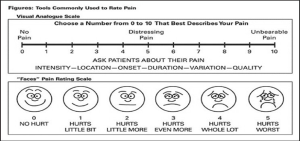The Consequences of Preprocedural Anxiety Level on Post Procedural Pain in Women Experienced During Hysterosalpingography
Main Article Content
Abstract
Background and Objective: Hysterosalpingography (HSG) is an invasive fluoroscopic investigation for infertility or recurrent spontaneous abortions. HSG is considered to be a cardinal diagnostic tool for proper assessment of uterine morphology and tubal patency. Due to its invasive mode of evaluation, it is considered to be a stressful and painful procedure. The updated researches show very scarce data regarding this maneuver. In this study, our aim was to investigate women's experience of HSG in terms of anxiety and pain using Beck's Anxiety Inventory (BAI) score and visual analogue scale (VAS) score respectively. Material and Methods: A cross-sectional prospective study was conducted in the X-Ray department of radiology of a tertiary care hospital in Karachi in 1 year period from 19-11-21 till 19-11-22. The data was collected from patients after taking a verbal consent and evaluating patients during the HSG procedure over a specified period. The sample size for the study was calculated to be 240 patients. The level of anxiety and pain of patients was judged on the basis of Beck Anxiety Inventory score (BAI) and Visual Analogue Score (VAS) respectively. Frequencies and percentages were computed for qualitative variables. Quantitative variables were presented as mean ± SD like age. Effect modifier like age was controlled through stratification. P-value of ≤0.05 was considered as significant. Results: The level of anxiety of patients was judged on the basis of Beck Anxiety Inventory score. 42.1% patients (n= 86) had nominal anxiety pre procedure, 45.6% patients (n=93) had mild anxiety. Moderate anxiety was noted in 6.4% of patients (n=13) while 5.9% (n=12) patients had severe anxiety. As per our results, patients who had nominal anxiety pre procedure, 83% of them suffered from mild pain and 17% of the patients suffered moderate pain and 0% had severe pain. Those who presented with mild anxiety experienced mild pain in 23% cases, moderate pain in 76% cases and none experienced severe pain. Patients with moderate and severe anxiety suffered severe pain in all (100%) cases. Conclusion: Anxiety has a crucial role in determining the pain score of the patient and with timely assessment of anxiety score; its management can reduce patient’s fear and sufferings. This study will serve as a basis of awareness and modification in pain and stress management for many invasive procedures done in diagnostic radiology.
Article Details

This work is licensed under a Creative Commons Attribution 4.0 International License.
